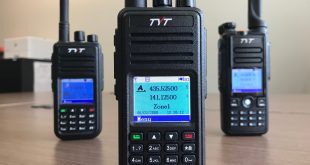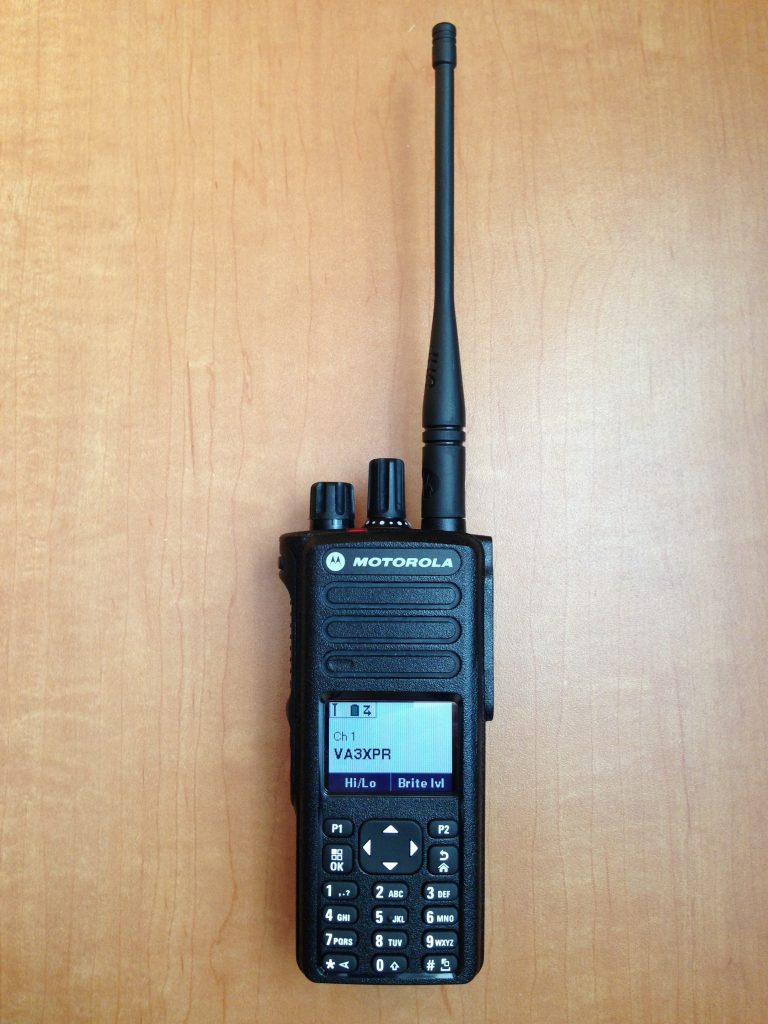
REVIEW DATE: June 16, 2013
REVIEWED BY: Don Trynor, VA3XFT
SUMMARY
The Motorola MOTOTRBO XPR 7550 is one of the latest additions to Motorola’s MOTOTRBO line of Digital Mobile Radio (aka DMR) TDMA radios, featuring best in class audio, integrated GPS, a multicolour LCD display, plus much more. This is an excellent single band radio for amateur radio use on the 2m and 70cm bands, as it is feature rich, durable and likely to more than satisfy even the most demanding user. At the time of this review, the “ham friendly” pricing for a new XPR 7550 from a Motorola dealer was $700US.
EDITORS’ RATING
Excellent
THE GOOD
- Audio Quality: The speaker audio is very full, with a good response to low frequencies, making it pleasing to listen to;
- Audio Volume: The audio from this radio will get heard, even in the noisiest environments;
- Rugged Construction: This radio is very well built, being MIL Spec, so it should keep going long after typical ham radio units call it quits;
- Bluetooth Capability: Bluetooth is included with the radio, allowing wire free operation and programming;
- Integrated GPS: The radio comes standard with integrated GPS location capability, allowing outdoor location tracking;
- Multicolor LCD Display: Having a multicolor LCD display on the radio allows for easy use and programming while on the move;
THE BAD
- External Antenna: To attach an external antenna, a $200 external antenna adapter is required;
- 25 kHz FM Operation: To be able to use this radio with the standard 25 kHz channel width found on the ham radio bands, you will need a Entitlement ID from Motorola, which requires a valid MOTOTRBO CPS subscription.
THE FULL REVIEW
Form Factor
The XPR 7550 is a compact portable radio that fits nicely in the hand and is light weight, making it easy to carry. Even with the extra high capacity batter, it is still a pleasure to hold. In addition to it’s great ergonomic design, the radio is a very rugged and able to endure harsh environmental conditions, including being water resistant and able to survive in up to one metre of water for up to 30 minutes, meeting the requirements of International Protection Rating IP57.
Knobs, Buttons & Switches
There are two knobs on the XPR 7550 – one is the power switch/volume knob and the other is to select the desired operating channel. Both of these knobs are easily accessed on the radio and they provide a slight “click” as positive indication that either the radio is turned on/of or that the channel is changed. One nice feature of the channel change knob is that it can continuously rotate and not limited to the standard 16 positions, which is the case with most other Motorola portable radios.
The XPR 7550 comes equipped with a 17-button keyboard, which includes a 4-way navigation button to navigate through the radio’s on-screen menu, plus two programmable buttons that can be assigned in the MOTOTRBO CPS. The keypad is also backlit, which helps a great deal when using the radio at night or in dark environments.
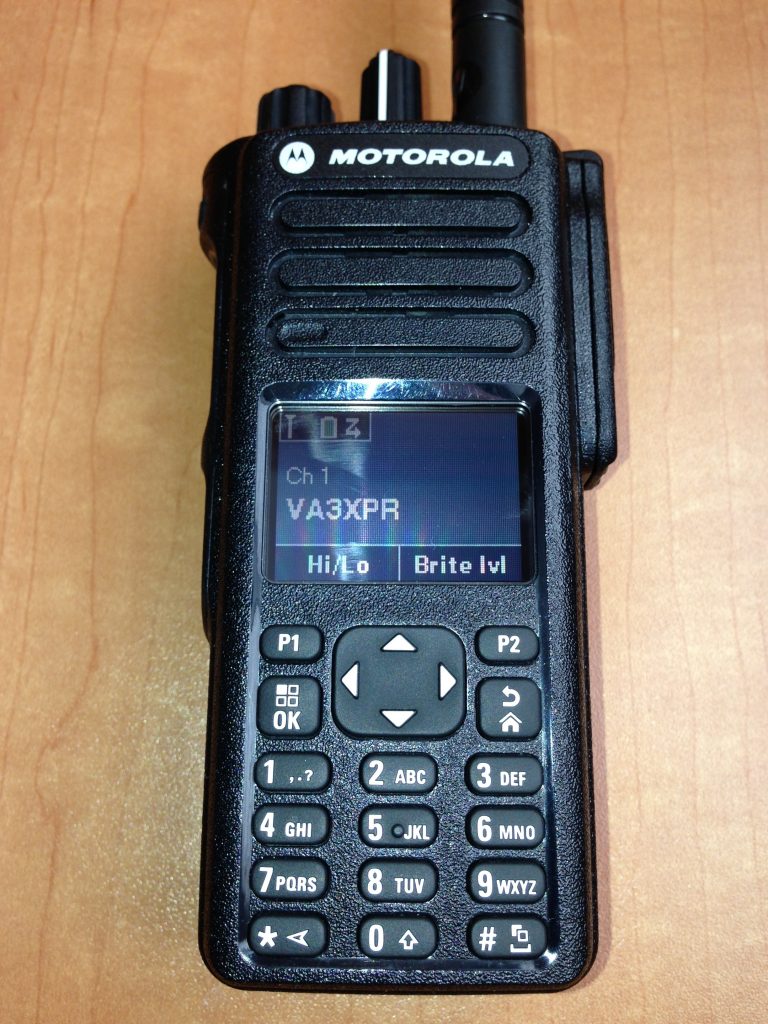
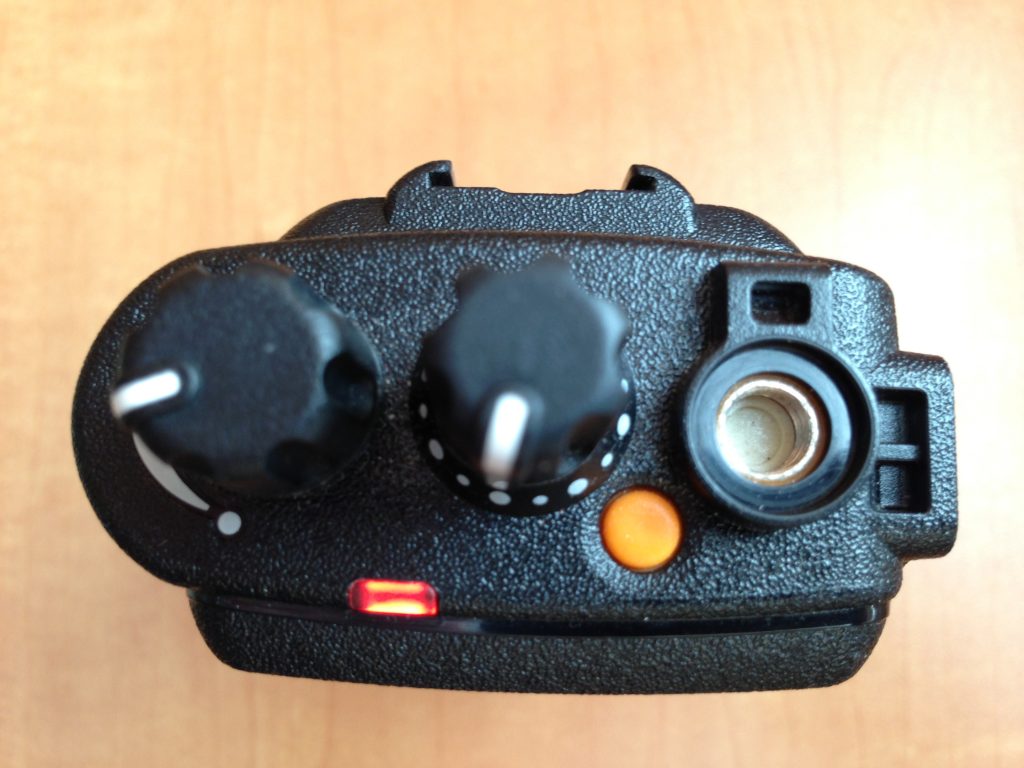
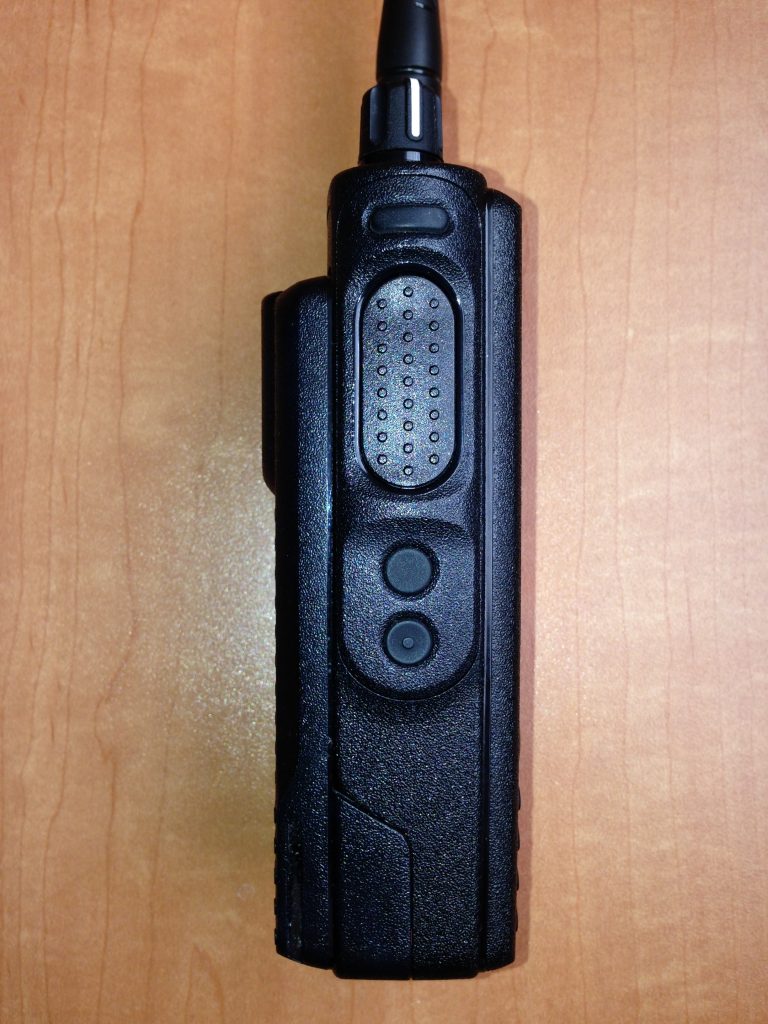
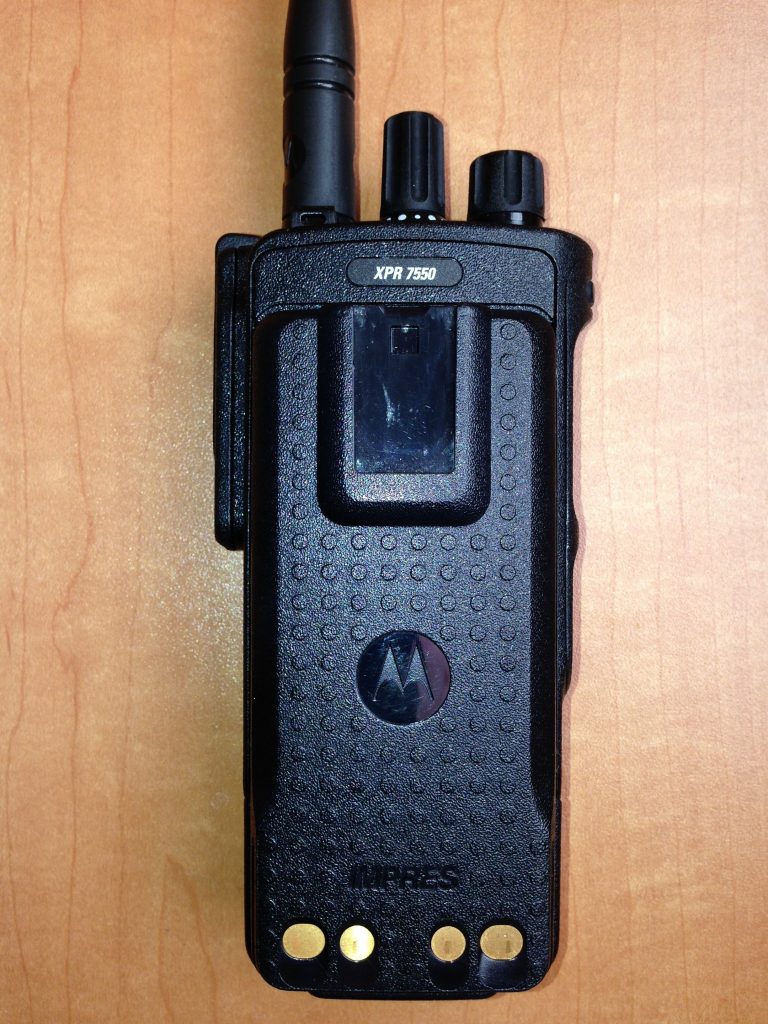
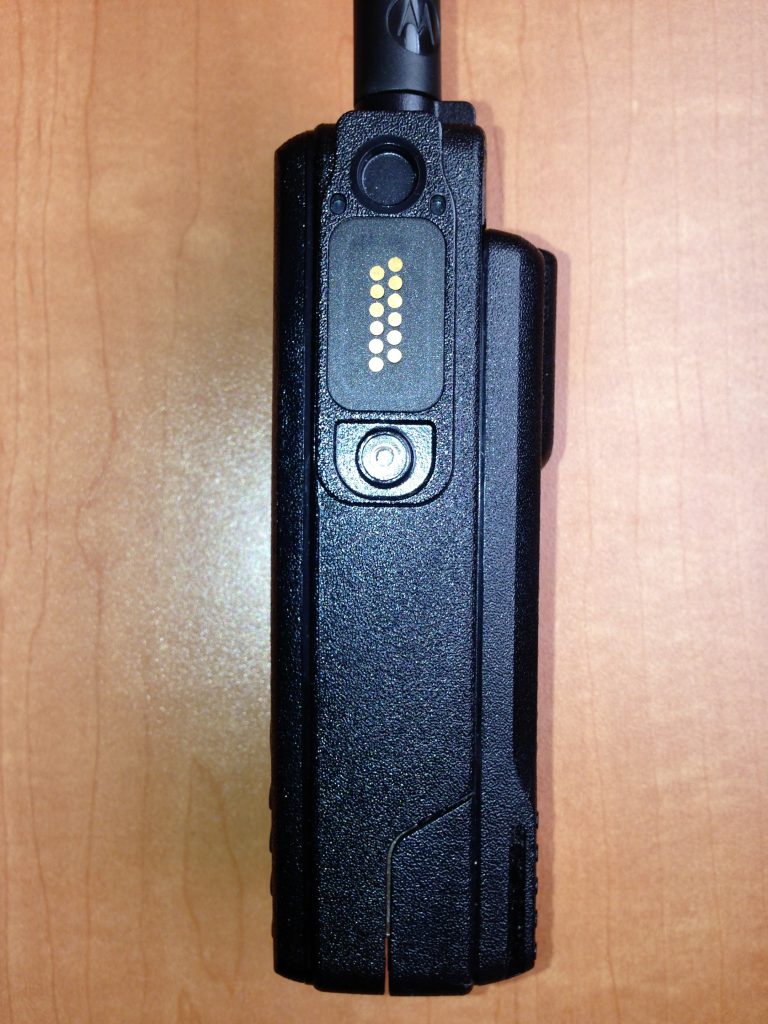
Antenna
The XPR 7550 comes standard with either a wideband whip antenna for UHF or a helical antenna for VHF. In addition the standard antennas, the XPR 7550 can also be fitted with stubby antenna versions, which can be very useful for minimizing the radio’s profile in areas where maximum coverage is not a necessity.
One of the challenging aspects about this radio is that if you want to attach it to an external antenna, you will require a $200 external antenna adapter. For some, this may not be a problem, however for the average user, this will make using the stock antenna the only practical option.
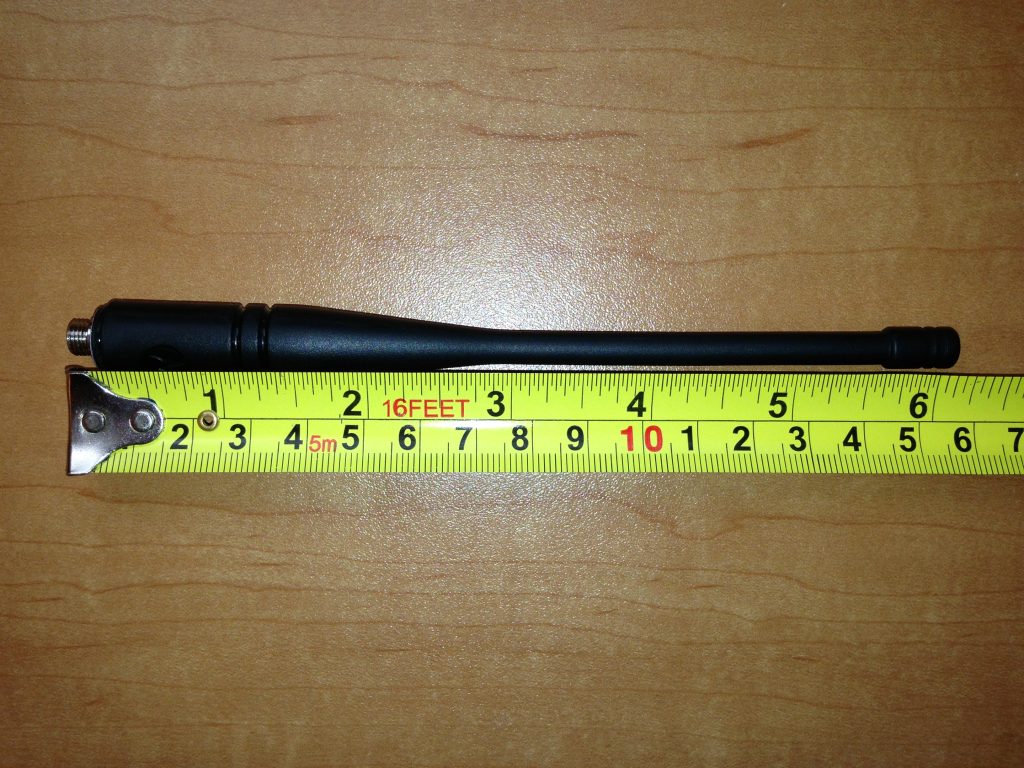
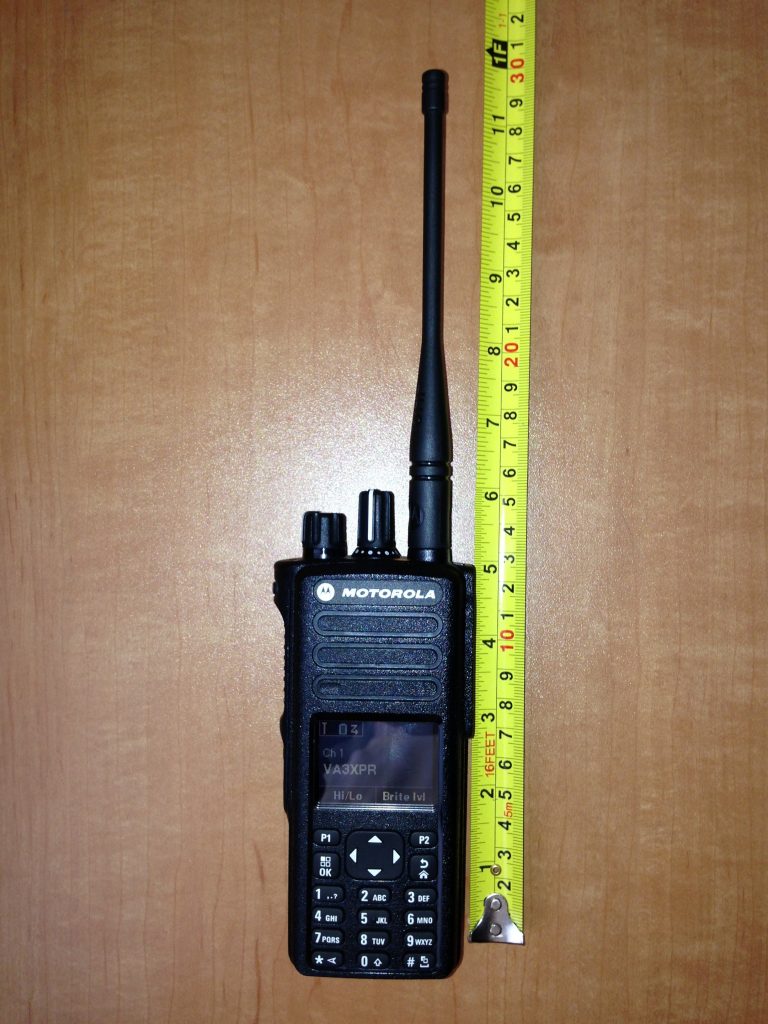
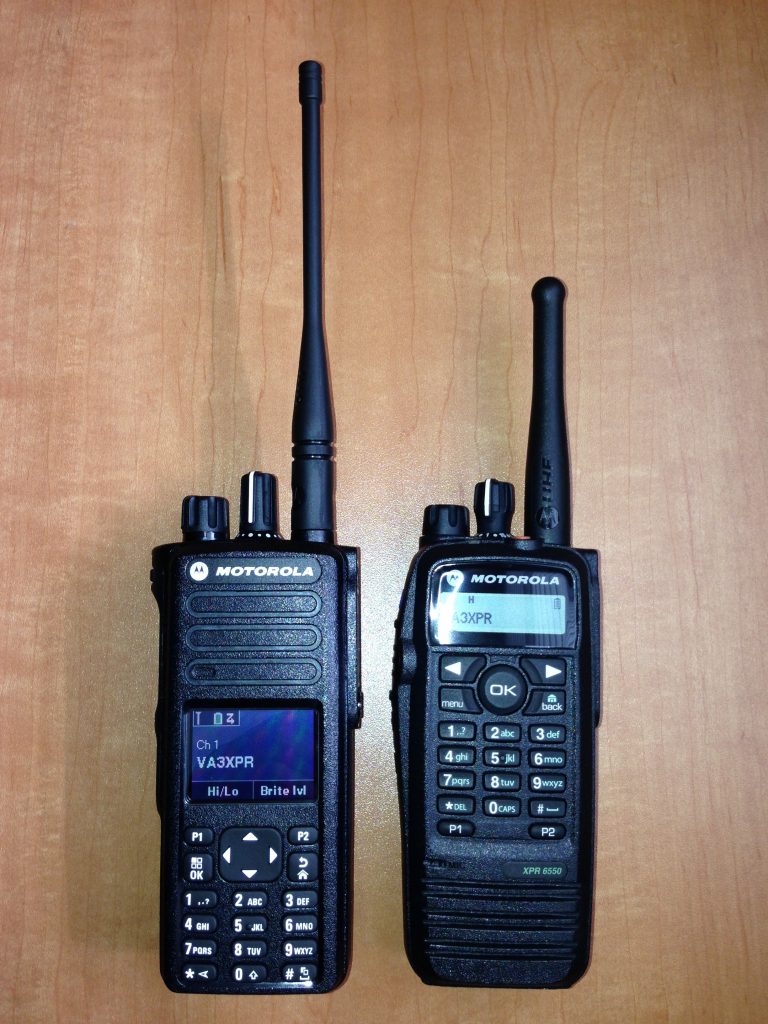
Audio
One of the best features of this radio is its speaker audio. Not only does the radio have loud, clear audio, but it also has a wide audio frequency response, providing good response to low audio frequencies. The rated speaker output is 500mW, so the radio will be heard in noisy environments where many typical ham radio portables will be inaudible. The fullness of the audio is one of the best features of the radio, making it a very pleasing unit to listen to.
The one annoyance with the audio associated with this unit is its inability to operate at very low volumes. In the CPS, the user can reduce the minimum volume to -30dB, however in a quiet environment, this can be too loud for comfort.
Multicolour LCD Display
The LCD display on the XPR 7550 is the other feature that makes this radio a pleasure to use. Sporting a bright 5-line multicolour LCD display, it makes the radio easy to use, especially when navigating through the menus or attempting to type a text message. The LCD display can be set to the user’s desired brightness, allowing it to dimmed when in dark operating environments or brightened when in bright areas. In addition, the user can also switch the display colours to correspond to a day mode or night mode, which alternates the display text to dark/light or vice versa.
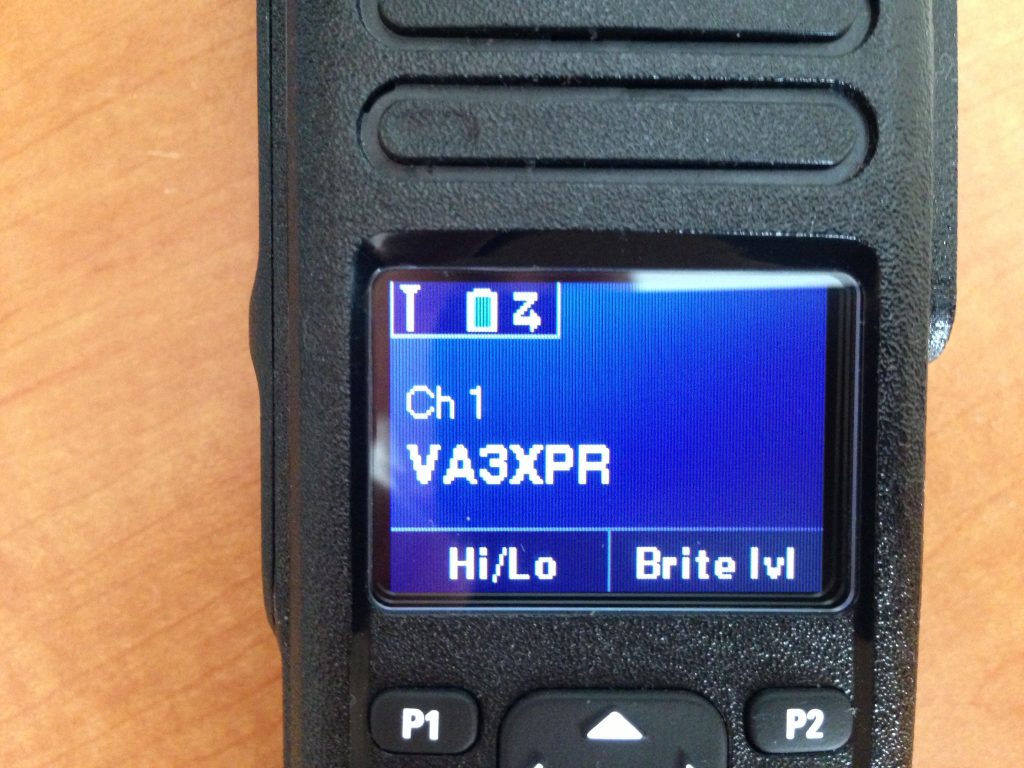
Digital Modes
The XPR 7550 is Motorola’s flagship portable in the MOTOTRBO line of Digital Mobile Radio (DMR) equipment and as such, it only supports DMR, which is TDMA based. In addition, the XPR 7550 will operate in either 12.5 or 25 kHz analog FM modes, however operation using 25 kHz channel width is only possible using an Entitlement ID from Motorola. These 25 kHz EIDs are provided for free from Motorola with any valid MOTOTRBO CPS subscription and will enable the XPR 7550 to operate using the standard 25 kHz channel width found on the ham radio 2m or 70cm bands.
RF Performance
The XPR 7550 comes with all the high quality RX and TX specifications that are typical of Motorola. In the MOTOTRBO CPS programming software, you can actually configure the TX output power settings as desired. The typical power setting for this radio are as follows:
|
Band |
High Power |
Low Power |
|
VHF |
5 watts |
1 watt |
|
UHF |
4 watts |
1 watt |
For the RX, Motorola states the following specifications:
|
Band |
Analog Sensitivity (12 dB SINAD) |
Digital Sensitivity (5% BER) |
|
VHF |
0.30 µV |
0.25 µV |
|
UHF |
0.30 µV |
0.25 µV |
Batteries & Charger
There are essentially two IMPRES lithium ion battery options for the Motorola XPR 7550 – standard capacity and high capacity. The high capacity battery is included with the radio out of the box. What’s the difference? See the chart below for the comparison:
| Specification |
Standard Capacity |
High Capacity |
| Capacity (mAH) |
1,500 mAH |
2,150 mAH |
| Length (cm/inches) |
35.8/1.41 |
41.1/1.62 |
| Weight (g/oz) |
335.5/11.83 |
355.5/12.54 |
For normal use, the standard capacity battery will last for about 8 hours. If additional capacity is required, you can always pick-up a high capacity battery, however the radio will become ~0.25” thicker.
As for the charger used with the Motorola XPR 7550, there is a single unit IMPRES charger that comes standard with the unit (WPLN4243A).
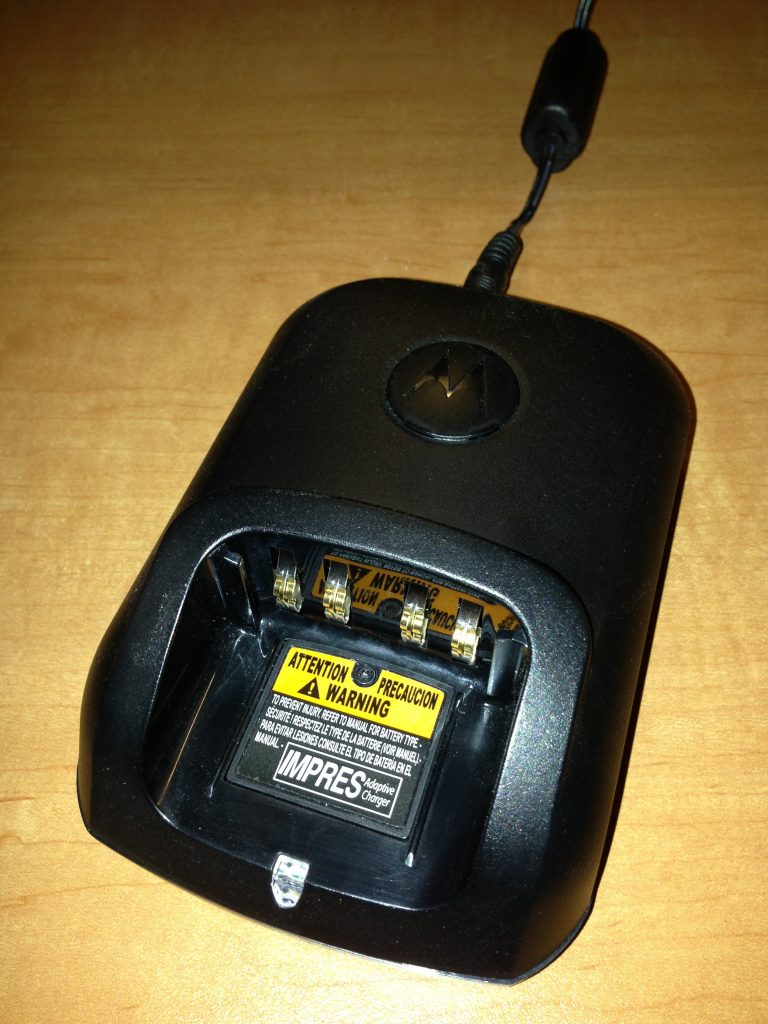
Programming
In order to fully realize the potential of this radio, one must have access to the MOTOTRBO CPS (Customer Programming Software) and optionally, a programming cable (PMKN4012B) to configure it to your particular requirements and usage preferences. If your Windows PC is Bluetooth capable, the MOTOTRBO CPS allows for Bluetooth programming. Many vendors will program your radio for you for a charge, or you can do it yourself. The MOTOTRBO CPS software allows many configuration options for the radio and almost every attribute of the radios operation can be controlled using it. Of course, with so many configuration options available, programming the radio can become very time consuming and difficult. Fortunately, the Help menus within the MOTOTRBO CPS help a great deal in explaining what the various options are used for. It is highly recommended that if you want to program one of these radios for ham radio use that you first consult with a professional who is familiar with the radio and the MOTOTRBO CPS programming software. For more information about programming this and other MOTOTRBO radios, check out some of the DMR-MARC website.
Accessories
For most users, the only accessories that will be needed will be a speaker microphone (PMMN4025A), a single unit charger (WPLN4243A), and a programming cable (PMKN4012B). Unfortunately, there carrying case options for the XPR 7550 are very limited, however using the included belt clip will as a way to carry the radio, however it does not offer any protection for the radio.
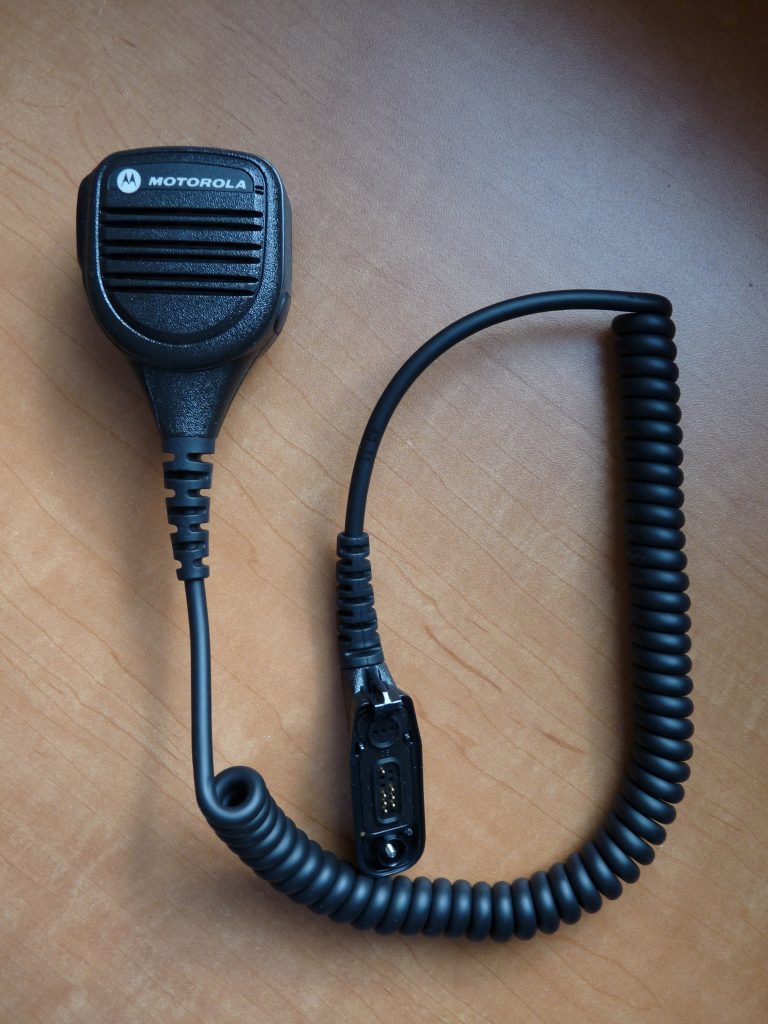
If you found this review useful, please share it with your friends using the below Facebook, Twitter or Google+ buttons!
 VA3XPR Exploring the World of Digital Ham Radio
VA3XPR Exploring the World of Digital Ham Radio


